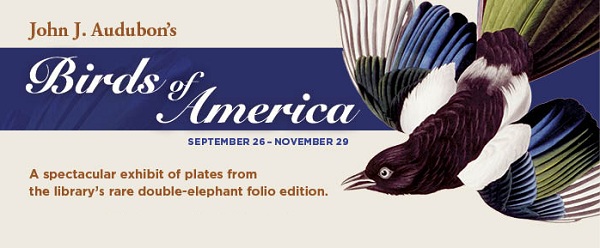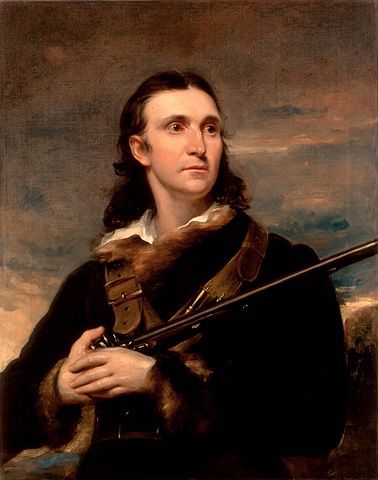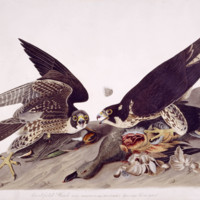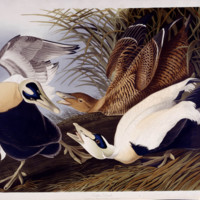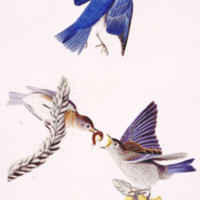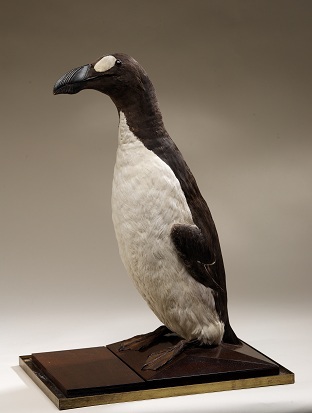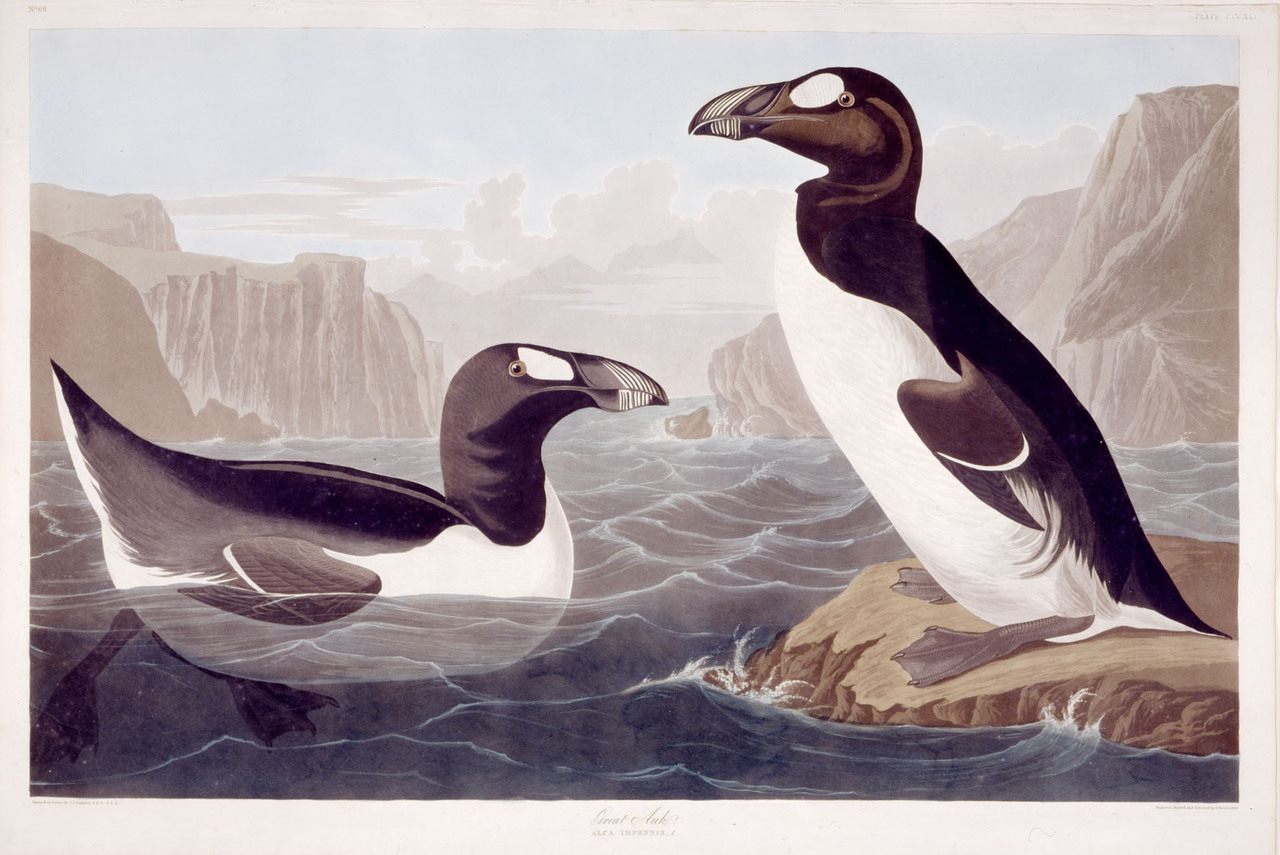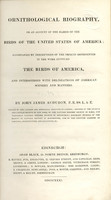About John J. Audubon
John James Audubon was born in Saint-Dominique, present-day Haiti, in 1785. Named Jean Rabine at birth, he was the son of a French sea captain and plantation owner, and his Creole chambermaid. He was brought to France and given a "gentlemen's education" in Brittany.
At the age of 18, he set off for the United States. There he spent much of his time in fields and forests, hunting and honing his skills as a wildlife painter. He met his wife Lucy Bakewell and had two sons, Victor Gifford and John Woodhouse.
Facing bankrupcy and few economic prospects, Audubon set out to begin his great masterwork. His goal was to paint all of the birds in North America.
Unlike other artists of the time, he depicted birds so that they looked vivid and alive. His watercolours captured details about how each species moved, what it ate, and where it lived.
Working before the invention of the camera, Audubon spent years observing birds in the wild. When that wasn’t possible, he relied on his skills as a taxidermist, using mounted specimens to create life-like poses.
The specimen of the Great Auk (Pinguinus impennis) at left, now in the collection of the Royal Ontario Museum, is believed to have belonged to Audubon.
Beneath it, Audubon's rendition (plate 341) appears.
Audubon set out to England in 1826 with a partially completed portfolio in hand to find a publisher for his work. After exhibiting his prints Audubon became an overnight success. He located a printer, first in Edinburgh, then in London.
Between 1826 and 1838, he and engraver Robert Havell Jr. — together with a large staff of young women “colourists” — produced Birds of America. It was comprised of 435 engraved and hand-coloured plates, printed on the largest paper available at the time. To offset the monumental costs of producing the work, copies were sold by subscription.
Audubon published his extensive field notes — known as the Ornithological Biography – separately. Had text been included in Birds of America, he would have been required to donate a copy to every library in England (a requirement known as Legal Deposit).
Almost two centuries after Audubon first envisioned it, Birds of America continues to be revered for its beauty, scientific merit and historical significance.
